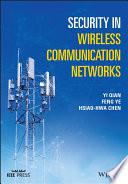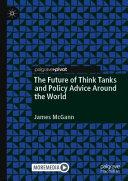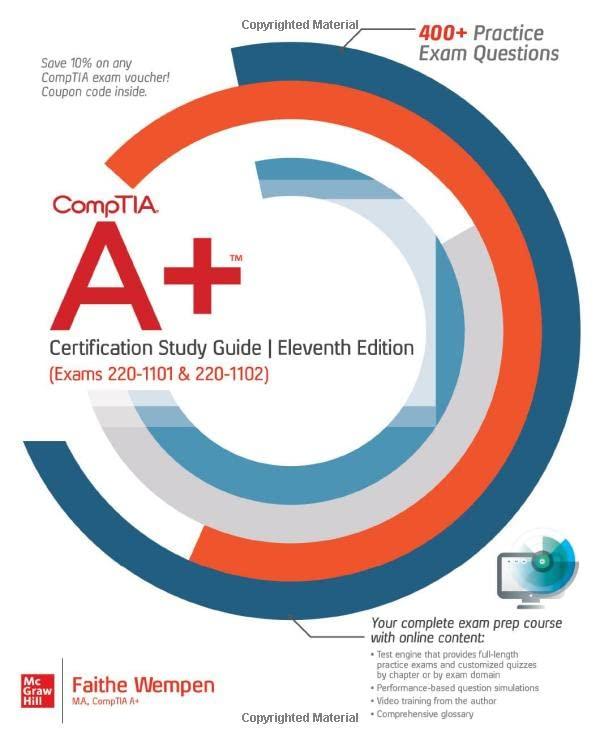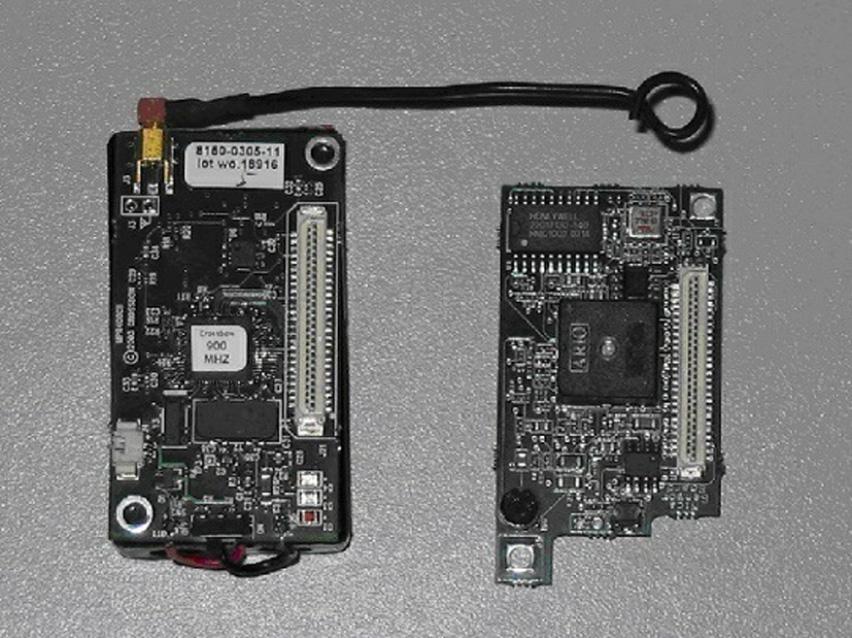RandomlyDeployed WirelessSensor Networks
XiChen TsinghuaUniversity Beijing,China
Elsevier
Radarweg29,POBox211,1000AEAmsterdam,Netherlands
TheBoulevard,LangfordLane,Kidlington,OxfordOX51GB,UnitedKingdom 50HampshireStreet,5thFloor,Cambridge,MA02139,UnitedStates
Copyright©2020TsinghuaUniversityPress.PublishedbyElsevierInc.Allrightsreserved.
MATLAB® isatrademarkofTheMathWorks,Inc.andisusedwithpermission. TheMathWorksdoesnotwarranttheaccuracyofthetextorexercisesinthisbook. Thisbook’suseordiscussionofMATLAB® softwareorrelatedproductsdoesnotconstitute endorsementorsponsorshipbyTheMathWorksofaparticularpedagogicalapproachorparticularuse oftheMATLAB® software.
Nopartofthispublicationmaybereproducedortransmittedinanyformorbyanymeans,electronic ormechanical,includingphotocopying,recording,oranyinformationstorageandretrievalsystem, withoutpermissioninwritingfromthepublisher.Detailsonhowtoseekpermission,further informationaboutthePublisher’spermissionspoliciesandourarrangementswithorganizationssuch astheCopyrightClearanceCenterandtheCopyrightLicensingAgency,canbefoundatourwebsite: www.elsevier.com/permissions
Thisbookandtheindividualcontributionscontainedinitareprotectedundercopyrightbythe Publisher(otherthanasmaybenotedherein).
Notices
Knowledgeandbestpracticeinthisfieldareconstantlychanging.Asnewresearchandexperience broadenourunderstanding,changesinresearchmethods,professionalpractices,ormedicaltreatment maybecomenecessary.
Practitionersandresearchersmustalwaysrelyontheirownexperienceandknowledgeinevaluating andusinganyinformation,methods,compounds,orexperimentsdescribedherein.Inusingsuch informationormethodstheyshouldbemindfuloftheirownsafetyandthesafetyofothers,including partiesforwhomtheyhaveaprofessionalresponsibility.
Tothefullestextentofthelaw,neitherthePublishernortheauthors,contributors,oreditors,assume anyliabilityforanyinjuryand/ordamagetopersonsorpropertyasamatterofproductsliability, negligenceorotherwise,orfromanyuseoroperationofanymethods,products,instructions,orideas containedinthematerialherein.
LibraryofCongressCataloging-in-PublicationData
AcatalogrecordforthisbookisavailablefromtheLibraryofCongress
BritishLibraryCataloguing-in-PublicationData
AcataloguerecordforthisbookisavailablefromtheBritishLibrary
ISBN:978-0-12-819624-3
ForinformationonallElsevierpublications visitourwebsiteat https://www.elsevier.com/books-and-journals
Publisher: MaraConner
AcquisitionsEditor: GlynJones
EditorialProjectManager: NaomiRobertson
ProductionProjectManager: PoulouseJoseph Designer: GregHarris
TypesetbyVTeX
2.4.1HomogeneousWSNs .........................29
2.4.2HeterogeneousWSNs .........................31
2.5 Summary........................................32 References. ......................................32
CHAPTER3Percentagecoverageschemes .................. 35
3.1 Location-basedpercentagecoverage ...................36
3.1.1Occupationarea .............................37
3.1.2Percentagecoverageconfigurationprotocol .........40
3.1.3Simulationandanalysis ........................42
3.2 Location-freepercentagecoverage. ....................44
3.2.1Occupationarea .............................44
3.2.2Standingguardprotocol... ....................45
3.2.3Simulationandanalysis ........................48
3.3 Summary........................................51 References. ......................................51
CHAPTER4Dynamictargetdetection ........................ 53
4.1 Stateswitchingscheme .............................55
4.2 Analysisofdetectionprobability.. ....................55
4.2.1Detectionprobabilityofanindividualsensor ........56
4.2.2Detectionprobabilitywithgiventarget’spath .......58
4.2.3Numberofnodeswhichsuccessindetectingtarget...60
4.3 Performanceoptimization ...........................61
4.3.1Maximizingdetectionprobabilitywithgivennetwork lifetime....................................62
4.3.2Maximizingnetworklifetimewithbudgetlimit ......64 4.4 Summary........................................65 References. ......................................66
CHAPTER5Probabilisticforwardingprotocols ............... 67
5.1 Probabilisticforwarding(ProFor).. ....................69
5.1.1Modeldescription ............................69
5.1.2Analysisofrelayprobability ....................70
5.1.3Simulationandanalysis ........................73
5.2 Enhancedprobabilisticforwarding(EnProFor). ...........76
5.2.1Analysisofrelayprobability ....................77
5.2.2Simulationandanalysis ........................79
5.3 Analysisofenergyconsumption.. ....................81 Relayingbysiblingnodes.. ....................81 Simulationandanalysisofthenumberofrelays.....83 Multiplebasestations .........................86 Messagepriority.............................87
5.4 Summary........................................87 References. ......................................87
CHAPTER6Stochasticschedulingalgorithms
6.2
6.3
6.2.1Analysisofenergyconsumption
6.2.2Dynamictuningofworkingprobability...
6.2.3Performancetest..
6.3.1Modelofnodefailure
6.3.2Dynamicturningofworkingprobability..
6.4.1Reviseddynamicworkingprobability
CHAPTER7Energy-basedmultisourcelocalization
7.1
7.1.1Localizationusingmaximumlikelihoodestimation...105
7.1.2Locationinitializationforlocalization
7.1.3Simulationandanalysis
7.2 Sourcenumberestimation
7.2.1Estimationbasedonnodeselectionandclustering
7.2.2Estimationbasedonminimumdescriptionlength
7.2.3Simulationandanalysis
7.3
Acknowledgments
AlargeportionofthebookisbasedonmyworkonwirelesssensornetworkssinceI joinedintheCenterforIntelligentandNetworkedSystems,DepartmentofAutomation,TsinghuaUniversity.
IfirstwouldliketoexpressmysincerethankstoProf.Yu-ChiHoforhisadvice andhelp.Hisinsightsandinspirationhavehadagreatimpactonmyresearch.
IwouldliketothankProf.XiaohongGuanforhisleadershipandsupport.
Iwouldalsoliketothankallcolleaguesandstudentswhohaveworkedwith meandpublishedpapersonwirelesssensornetworks:HongxingBai,JunfengGe, DianfeiHan,QingshanJia,YonghengJiang,BingLi,JianghaiLi,JieLi,Chunkai Nie,WenTang,XingshiWang,YongcaiWang,LiXia,RuixiYuan,JiansongZhang, QianchuanZhao,andHongchaoZhou.
Mythanksalsogotothethreeanonymousreviewersofthebookproposal.Iappreciatetheirhelpfulcommentsandsuggestions.
Iamgratefultothosewhoreaddraftsofthismaterialandmadesuggestionsto improveit:GuanghongHan,ZixuanLi,AnbangLiu,RenlinLiu,JinghuiZhang,and XiweiZheng.IowethankstoElsevierandTsinghuaUniversityPress.
Finally,IwouldliketothankTsinghuaUniversity,NationalNaturalScience FoundationofChina,NationalKeyResearchandDevelopmentProjectofChinafor providingmewithfinancialsupportaswellasexcellentresearchenvironment.
ThisworkispartiallysupportedbytheNationalKeyResearchandDevelopment ProjectofChina(No.2017YFC0704100)andtheNationalNaturalScienceFoundationofChina(No.60574064and60574087).
XiChen DepartmentofAutomation TsinghuaUniversity Beijing,China December2019
Recentadvancesinwirelesscommunicationsandmicroelectromechanicalsystem haveenabledthedevelopmentoflow-cost,low-power,multi-functionalsensorsthat aresmallinsizeandcancommunicatewitheachotherfromshortdistances[1].In thetechnologyreviewofMIT’sMagazineofInnovationinFebruary2003,Wireless sensornetworks(WSNs)comefirstofthe10emergingtechnologiesthatwillchange theworld.
1.1 OverviewofWSNs
AWSNusuallyconsistsofsensornodes,sinknodes(orbasestations)andendusers. Sensornodesaredeployedintheareaofinteresttoformaself-organizednetwork RandomlyDeployedWirelessSensorNetworks. https://doi.org/10.1016/B978-0-12-819624-3.00006-9
tomonitortheenvironmentsandtransmitthephenomenontheysensedtosinknodes withsomeroutingprotocols.Sinknodesareoftenmorepowerfulincomputationand long-rangecommunication.AsshowninFig. 1.1,sensornodestransmittheirsensed datatothesinknodebymultihoprelays;thesinknodeimplementsdatafusionand thensendstheinformationtoendusersthroughInternet,satelliteormobileaccess point(e.g.unmannedaerialvehicle).Thisinformationhelpsuserstomonitorthe environments.Conversely,enduserscanalsosendcommandstothenetworkfortask configurationorinformationinquiring.
FIGURE1.1
TypicalWSNarchitecture.
AsshowninFig. 1.2,sensornodesareusuallycomposedofsensing,dataprocessing,communicatingandpowermodules.Inaddition,dependingontheapplication requirements,sensornodesmayalsoincludealocalizationsystem(e.g.GPS),an energyharvestingmodule(e.g.solarbattery),alocomotorymodule,etc.
FIGURE1.2
Compositionofasensornode.
Fig. 1.3 presentsthephotographofMica2,whichisanearlyproductionofCrossbowTechnology,Inc.ItispoweredbytwoAAbatteries.Theantennais10centime-
tersinlengthanditsCPUisATmega128L,4KRAMand128KFlash.Thesensor boardcanintegratevariousmicrosensors,suchasphotosensors,thermalsensors, magneticsensors,accelerometers,microphonesandbuzzers.
FIGURE1.3 Mica2mote(left)andMica2sensorboard(right).
Differentfromotherwirelessnetworks,e.g.mobilecommunicationnetworks, wirelesslocalareanetworksandbluetoothnetworks,WSNshavethefollowingfeatures.
1. Sensornodesarelimitedinpower,computationalcapacityandmemory.Assensor nodesareusuallypoweredbybatteries,energybalancingandenergyefficiency arecrucialforprolongingthenetworklifetime.Asenergyconsumptionisproportiontothe nth(n 2)powerofthecommunicationdistance,multihoproutingis preferable.
2. Therearealargenumberofsensornodesinanetwork.Moresensornodeswhich aredeployedintheareaofinterestcanperformbetterinmonitoringtheenvironment.However,moresensornodeswillreducethenetworkutilizationand increasethecost.Thekeypointisthetradeoffbetweennetworkperformanceand cost.
3. Afterbeingdeployed,sensornodesareself-organizedintoanetworkandcollaboratetoaccomplishacommontask.Thereisnostrictcentralnode.Malfunction orfailureofasinglenodecanhardlyaffectnetworkperformance.Sensornodes cooperatewithahierarchyprotocolandadistributedalgorithm.
4. Thetopologyofanetworkmaychangewithtime.Sensornodesmaybecome invalidastheirpowerisusedupordefunctduetorandomevents.Othernodes mayjointhenetworktomeettherequirementonperformance.Toextendthe networklifetime,workingschemeswhichleteachnodeswitchbetweenworking andsleepingstatesalsoresultinadynamictopology.
1.2 ResearchtopicsinWSNs
Thestudyonhardwareofsensornodesinvolvesanembeddedprocessingunit,acommunicationdeviceandsensingelements,whiletheresearchonsoftwareofsensor nodesfocusesonoperatingsystemsandprogramminglanguages.Besidesmeeting therequirementsondataprocessing,storage,communicationandsensing,bothhardwareandsoftwareshouldbedesignedtooptimizeenergyconsumption.Somemain topicsonsensornodesareasfollows.
Sensingtechnology
Variousapplicationsmaydemandsensornodestocollectdifferentphysicalsignals.Thedesignofsensornodeswhicharehigh-integrated,multi-functionalizedand miniaturizedhasbeenthefocusofthestudy.
Low-power-consumptionsensornodes
Duetothelimitsoncostandvolume,sensornodesareusuallypoweredwithbatteries andcannotberecharged.Itishighlynecessarytoresearchanddeveloplow-powerconsumptionsensornodeswhichcanworkmuchlonger.
Low-costsensornodes
AWSNiscomposedofalargenumberofsensornodes.TomakeWSNsaffordable, moreeffortsneedtobemadetolowerthecostofsensornodewhileensuringits performance.
Wirelesscommunicationtechnology
Sensornodesneedsimple,low-costandrobustcommunicationtechnology.Technologiesofcarrier,antennae,anddatamodulation-demodulationaremainsubjectsin thefieldofsensornodes.
Theresearchinsensornodeshasbeenwellestablishedfromprototypesystems tocommercialapplications.AnearlierproductseriesdevelopedbytheUniversityofCalifornia,Berkeley,andCrossbowTechnology,Inc.includeMica,Mica2, Mica2Dot,andMicaZwithoperatingsystemTinyOSandprogramminglanguage Nesc.TheyhavebeenwidelyappliedinresearchanddevelopmentofWSNs.
Communicationprotocols
ForWSNs,communicationprotocolsusuallyconsistofprotocolsforthetransport layer,thenetworklayerandthedata-linklayer.
• Transportlayer
Duetotheapplication-orientedandcollaborativenatureofWSNs,themaindata flowoccursintheforwardpathasthesourcenodestransmittheirdatatothesink.
Thedataoriginatingfromthesink,suchasprogramming/retaskingbinaries,queries, andcommands,issenttothesourcenodesinthereversepath.Differentfromtraditionalcommunicationnetworks,atthetransportlayer,theWSNparadigmdemands anevent-to-sinkreliabilitynotion.Itisnecessarytoimplementtransportlayercongestioncontrolintheforwardpathtoensurereliableeventdetectionatthesink[36].
Event-to-sinkreliabletransportinWSNsdiffersfromtheconventionalend-to-end reliabletransportinwirelessnetworks.Thelattertransportisbasedonacknowledgmentsandend-to-endretransmissions.Thesemechanismsforstrictend-to-end reliabilityareunnecessaryandspendtoomuchenergy.ForWSNs,transportlayer protocolsshouldachievereliableeventdetectionwithminimizingenergyconsumption[26].
Theflowinthereversepathmainlycontainsdatatransmittedbythesinkforanoperationalorapplication-specificpurpose.Disseminationofthisdatamostlyrequires 100%reliabledelivery.Thisstrictreliabilityrequirementforthesink-to-sensors transportdemandsretransmissionandacknowledgmentmechanisms.However,to saveenergy,localretransmissionandnegativeacknowledgmentapproacheswould bemoresuitablethanend-to-endretransmissionandacknowledgments[35].
• Networklayer
Energyefficiencyismostimportantfornetworklayerprotocols.InWSNs,to integratetightlywiththeinformationordata,aroutingprotocolmaybedesigned accordingtodata-centrictechniques[21,30].Adata-centricroutingprotocolshould applyadataaggregationtechniquetosolvetheimplosionandoverlapproblemsin routing[11].Dataaggregationcombinesdatafrommanysensornodesintoasetof meaningfulinformationitems[12].
• Data-linklayer
Ingeneral,thedata-linklayerisprimarilyresponsibleformultiplexingdata streams,dataframedetection,mediumaccess,anderrorcontrol;itguaranteesreliablepoint-to-pointandpoint-to-multipointconnectionsinacommunicationnetwork. Themediumaccesscontrol(MAC)layerprotocolsinamultihopWSNneedtoestablishdatacommunicationlinksformultihopwirelesscommunicationinadensely scatteredsensorfieldandregulateaccesstosharedmediatoletsensornodesfairly andefficientlysharecommunicationresources.TheMACprotocolmusthavebuilt-in powerconservation,mobilitymanagementandfailurerecoverystrategies[35].
TherearethreekindsofMACschemesapplicabletoWSNs.MACprotocols basedontime-divisionmultipleaccessschemescanreducethedutycycleofthe radio.Hencetheycanpreventcollisionsandsavemoreenergythancontention-based schemes.Apuretime-divisionmultipleaccess-basedaccessschemededicatesthe entirechanneltoasinglesensornode,whileapurefrequency-divisionmultipleaccessschemeallocatesaminimumsignalbandwidthpernode.Thetradeoffbetween theaccesscapacityandtheenergyconsumptionplaysakeyroleinMACschemes. ForahybridTDMA/FDMA-basedaccessscheme,theoptimumnumberofchannels dependsontheratioofthepowerconsumptionofthetransmittertothatofthere-
ceiver.Afrequency-divisionmultipleaccessschemeisbetterwhenthetransmitter consumesmorepower.Whenthereceiverconsumesagreatamountofpower,the schemeshouldleantowardfrequency-divisionmultipleaccess[33].MACprotocols forWSNsneedtosupportvariablebuthighlycorrelatedanddominantlyperiodictraffic.Thelisteningmechanismandthebackoffschemearetwoimportantcomponents foranycarriersensingmediumaccess-basedscheme.Theconstantlistenperiodsare energyefficientandtheintroductionofrandomdelayprovidesrobustnessagainst repeatedcollisions[40].
InWSNs,anotherimportantfunctionofthedata-linklayeriserrorcontrolof thetransmitteddata.Themainapproachesoftheerrorcontrolmechanismsincommunicationnetworksareforwarderrorcontrolandautomaticrepeatrequest.Since automaticrepeatrequest-basederrorcontrolmechanismincurssignificantadditional retransmissioncostandoverhead,itisnotveryusefulinWSNapplications.Onthe otherhand,forwarderrorcontrolschemeshaveinherentdecodingcomplexity,which requiresgreatprocessingresourcesinsensornodes.Therefore,simpleerrorcontrol codeswithlow-complexityencodinganddecodingmaybethebestsolutionsforerror controlinWSNs.
Nodelocalization
Assensornodesmayberandomlydeployedintheareaofinterest,theymustbeaware oftheirlocationsinordertoprovidemeaningfuldatatotheusers.Locationinformationmayalsoberequiredbythenetworkanddata-linklayerprotocols.Alocalization protocolmustberobusttonodefailure,havelittlesensitivitytomeasurementnoise, beflexibleinanyterrainandhavelowerrorinlocationestimation.Therearetwo typesoflocalizationtechniques:beaconbasedandrelativelocationbased.
Beacon-basedmethodsrequirefewnodestohaveawell-definedlocationthrough GPSorthroughmanualconfiguration.Byrangingandestimation,nodescandiscover theirlocation.Duringtherangingphase,eachnodeestimatestherangeofitsneighbors.Andintheestimationphase,nodeswhoselocationsareunknownusetherange andthebeacons’locationstoestimatetheirlocations[27].Inaddition,mobilebeacon mechanismsprovideeconomicalandeffectivelocalizationsignalcoverageforsensor nodes[31].
Beacon-basedlocalizationprotocolsaresufficientforcertainWSNapplications. However,someWSNsmaybedeployedinareasunreachablebybeaconsorGPS.To obtainpreciserelativelocationinformation,sensornodesneedtodetectthelocation ofneighborsandcooperatewitheachotherforlocationestimation.
Timesynchronization
Likelocationinformation,timeinformationisacrucialelementforafullydescribed event.Sensornodesintheareaofinterestmustmaintainasimilartimewithina certaintolerancethroughoutthenetworklifetime.Forshort-distancemultihopbroadcasting,thedataprocessingtimeandthevariationofthedataprocessingtimesmay
resultintimefluctuationsanddifferencesinpathdelays.Inaddition,duetothewanderingeffectoflocalclocks,thetimedifferencebetweentwosensornodesmay becomesignificantovertime.Therearethreetypesoftimingtechniques.Thefirst onereliesonfixedtimeservers,whichareexpectedtoberobustandhighlypreciseto synchronizethenetwork.Sensornodesaresynchronizedtothesetimeservers.The secondonetranslatestimehop-by-hopfromthesourcetothesinkthroughoutthe network.Andthethirdonesynchronizesthenetworkbyautomaticallyorganizing anddeterminingthemasternodesasthetemporarytimeservers.Differenttiming techniquesandcommunicationprotocolsmaybeappliedtodifferentapplicationsto meettheirrequirementsonthequalityofserviceofthenetwork[35].
Networksecurity
InWSNs,thelow-costsensordevicesmaynotbebuiltwithhighreliability.Moreover,sensornodesareoftendeployedinanunattendedenvironmentorevenhostile circumstance.Theycommunicatewitheachotherusingwirelesssignalswhichare easytoeavesdrop.TherearevariouskindsofattacksagainstWSNs.Itisimportant toguaranteethatdataaresafelyreceivedbythesink.Sofar,therearetwokindsof securitysolutions:preventionbasedanddetectionbased.Typicalprevention-based techniquesareencryptionandauthentication.Detection-basedtechniquesaredesignedtoidentifyandisolateattackersafterprevention-basedtechniquesfail.
Researchonsecuritymainlyfocusesonkeymanagement,secureroutingprotocol,denialofserviceattacksandintrusiondetectionalgorithm.Keymanagement helpstoestablishsecurecommunicationsinnetworks.Self-healinggroup-wisekey schemeswithtime-limitednoderevocationguaranteesecrecy,andascertaincollusionfreedomandgroupconfidentialityinhighpacketlossenvironments[32].For denselydeployedWSNs,secureenergy-efficientroutingprotocolcanensuredata transmissionsecurityandmakegooduseoftheavailableamountofenergyinthe network[23].TwogeneralapproachesforbroadcastauthenticationinWSNsaredigitalsignatureand μTESLA-basedtechniques.Bothofthemarevulnerabletodenial ofserviceattacks.Bysimplyforgingalargenumberofbroadcastmessageswith digitalsignatures,anattackermayforcesensornodestoverifythesesignatures,and eventuallydepletetheirbatterypower.Byusinganefficientlyverifiableweakauthenticatoralongwithbroadcastauthentication,asensornodeneedstoperformthe expensivesignatureverificationorpacketforwardingonlywhentheweakauthenticatorisverified[22].DuetothetreestructuretopologyofaWSN,path-baseddenial ofserviceattacksmayexhaustthebatteriesofseveralnodesandhavethepotential todisableamuchwiderregionthanasinglepath.Amethodisproposedtodetect path-baseddenialofserviceattacksandthensetupacost-effectiverecoveryprocessbyusingmobileagentsinthenetwork[17].Anefficientdistributedgroup-based intrusiondetectionalgorithmisdevelopedtoidentifymaliciousattackers[18].An overhearing-baseddetectionmechanismispresentedtodealwithmaliciouspacketmodifyingattacksfromsomemaliciousnodeswhichmodifycontentsofdatapackets whilerelaying[34].
Applicationlayerprotocols
AttheapplicationlayerofWSNs,therearemainlythreeprotocols:thesensormanagementprotocol;thetaskassignmentanddataadvertisementprotocol;andthe sensorqueryanddatadisseminationprotocol.Systemadministratorscaninteract withWSNswithsensormanagementprotocol.SensornodesdonothaveglobalIDs andusuallyhavenoinfrastructuresupporting.Henceasensormanagementprotocolneedstoaccessthenodesbyusingattribute-basednamingandlocation-based addressing.Theadministrativetasksforasensormanagementprotocolincludesensornodes’workscheduling,dataprocessing,timesynchronization,securityindata communication,andnetworkconfigurationandreconfiguration.Usersmaybeinterestedinacertainattributeofaphenomenonoraspecificevent.Thetaskassignment anddataadvertisementprotocolprovidesasoftwareinterfacebetweenaWSNand itsusers.Usersmayhaveaninterestinasensornode,asubsetofsensornodes orthewholenetwork,whilesensornodescanadvertisetheavailabledatatothe users.Thesensorqueryanddatadisseminationprotocolprovidesinterfacestoissue queries,respondtoqueries,andcollectincomingreplies.Thesequeriesaregenerallyattribute-basedorlocation-basednaminginsteadofsendingtoparticularnodes [35].
Asthepowercannotbereplenishedforthebattery-drivensensornodes,toextendthenetworklifetime,energyefficiencyisalwaysacriticalissueofresearchin WSNs.
1.3 ApplicationsofWSNs
WSNshavebeenwidelyappliedinmilitary,agriculture,industry,environmentmonitoring,andvariousdailylifefields.Weintroducetheirapplicationswithafewspecific examples.
Militaryapplications
WSNsareusedbythemilitaryforanumberofpurposessuchasmonitoringmilitant activityinremoteareasandforceprotection.Beingequippedwithappropriatesensor nodes,thesenetworksenabledetectionofenemymovement,identificationofenemy forceandanalysisoftheirmovementandprogress[39].
Acousticsensorarrayssuspendedbelowtetheredaerostatsareusedtodetectand localizetransientsignalsfrommortars,artilleryandsmallarmsfire.Theairborne acousticsensorarraycalculatesanazimuthandelevationtotheoriginatingtransient, andimmediatelycuesacollocatedimager.Byprovidingadditionalsolutionvectors fromseveralground-basedacousticarrays,unattendedgroundsensorsystemscan augmentaerostatarraystoperforma3Dtriangulationonasourcelocation[29].
Theanti-submarinewarfareconceptusessmallsensorswithpassiveandactive sonartodetectmoderndieselsubmarinesoperatingonbatteries.Hundredsorthousandsofsensornodesaredeployedtoprovideahighdensitysensorfield.Low-cost
sensornodeshaveashortdetectionrange.Hencetheyarefarlesssusceptibletomultipathreverberationsandotheracousticartifacts[37].
ThecapabilityofaWSNmilitaryapplicationisdependentonthetypeandcapabilitiesofsensornodes,wirelesscommunicationsarchitecture,coverage,andappropriateinformationprocessing,fusionandknowledgegeneration.Formoremilitary applications,thereadermayreferto[7].
Precisionagriculture
WSNsareincreasinglyappliedinagriculturalindustry.Gravityfeedwatersystems canbemonitoredbyusingawirelessnetwork.Pressuretransmitterscanbeused tomonitorwatertanklevelsandpumps.Waterusecanbemeasuredandwirelessly transmittedbacktoacentralcontrolcenterforbilling.Irrigationautomationenables moreefficientwateruseandreducedwaste[6].
Lowproductioninagricultureismainlyduetotheabsenceofwaterinthesoil.For agriculturalmonitoring,themeasurementofmoisturelevelofplantsmaybequantifiedwiththedifferencebetweentheleaftemperatureandtheairtemperature.Anovel leaftemperaturesensorisdevelopedandthenetworkconsistingofsuchsensorsmeasuresthewaterstressonplants[5].
AWSNcomposedof64sensorsissetuptomonitoracommercialvineyard.The systemprovidessoftwaremodulesrangingfromfilteringrawdatatoacentralized andadistributeddatastorageapplications.Thenetworkprovidesbettergeographical coverageandanincreasedspatialresolutioncomparedtotraditionalsolutionsbased onindividualweatherstations[14].
Formoreagricultureapplications,thereadermayreferto[25].
Industrialapplications
IndustrialWSNs,whichincorporateWSNswithintelligentindustrialsystems,providemanyadvantagesoverexistingindustrialapplications,suchaslowcost,rapid deployment,wirelesscommunication,intelligentcontrolling,self-organization,and processingcapability.IndustrialWSNstechnologiesplayanimportantroleindevelopingmoreefficient,stable,reliable,flexible,andapplication-centricindustrial systems.In2014,theInternationalJournalofDistributedSensorNetworkspublished aspecialissueonindustrialWSNs,whichintroducesacollectionof17paperscoveringarangeoftopicsforspecificindustrialrequirements[19].
Microwirelesssensorscanbeembeddedintothekeypositionsofmanufacturing equipmentsorproductstomonitorthemmassivelyinrealtimemode.Thesesensor nodesdiagnoseandpredictfaultspromptlysothatthereliabilityoftheequipmentis enhancedandtheaccidentrateisreduced.Forexample,aWSNisdeployedtodetect theaxletemperatureforafreighttrain[44].
WSNscanalsomonitortheconditionsofindustrybuildingfacilitiesandpredict anypossibleproblemswithdatafusion.Itismuchmoreconvenientandaccuratethan traditionalapproaches.
Environmentalmonitoring
SpaceWSNsforPlanetaryExploration,asanEuropeanCommissioncollaborative project,presentanewapproachtousingWSNsforplanetarysurfacecharacterization. Spatiallydistributedsensorsintheproposednetworkscooperatetomonitorphysical andenvironmentalconditionsandsendtheirdatathroughanetworktoacentralprocessinglocation.Hundredsofsmallwirelesssensors(alsocalledsmartdust)maybe droppedfromanorbitingsatelliteontotheMoonsurfacetoensureauniformandsufficientcoverage.Thesesensornodescreatetheirownadhocnetworkwhilesomeof them,whichareequippedwithsatellitecommunicationcapabilities,establishalink betweentheWSNandanorbiterordirectlywiththeEarth.Datagatheredfromthe sensorsisprocessedandsenttotheorbiterandlatertotheEarth.Thesensorforthis projectisamicro-meteorologicalstation,whichcanmeasuretemperature,radiation, dustdepositionandirradianceatdifferentwavelengths.Eachstationisautonomously poweredandhasnetworkinganddataprocessingcapabilities[43].
WSNscangreatlyassistthegeophysicscommunity.Studyingactivevolcanoes demandshighdatarates,highdatafidelity,andsparsearrayswithhighspatialseparationbetweennodes.AWSNisdesignedanddeployedonVolcanReventador, whichislocatedinnorthernEcuador,forvolcanicdatacollectionandreliabledata retrieval[38].WSNsarealsousedtomonitorsnowcompositioninmountainslopes foravalancheforecasting[2].
TheGreatDuckIslandprojectisagoodexampleofhabitatandmicroclimate monitoring.AWSNisusedforthestudyofLeach’sstormpetrelonGreatDuck Island,Maine,USA.Thepetrel-watchingapparatusconsistsofadistributedsystem ofdevicescalled‘motes’.Themotecontainsapplication-specificsensorsandsignalprocessinghardwarefordatacollectionandhasalow-powerradiotransceiverfor communication.Whenthemotesarenetworkedtogether,eachsimultaneouslycollectsdatafromitsimmediatesurroundingsandpassesitsownandothermotes’data throughthenetwork[16].
Forestfiresareathreattosustainabilityoftheforest.Assurveillancesystems forforestfires,WSNsgatherdatavalues,liketemperatureandhumidity,fromall pointsofanareaincessantly,dayandnight,andrelayfreshandprecisedatatothe fire-fightingcenterquickly[42].
Healthmonitoring
WSNsinhealthcarecanimprovethewayofpatientsbeingmonitoredinaninfirmary orahospital.ThehealthcareWSNscollectandsendpatients’healthparameters,such asbloodpressure,pulse,bodytemperature,wirelesslytoremotemonitoringsystems. Theabilitytoletpatientsmovingaroundwhenhospitalizedisimportanttopromote theirqualityoflife[4].Withmultihopnetworkcommunication,comparedtoclassicalwiredorlargeinspectionequipment,micro-sensorscanbeusedinlong-term monitoringwithoutcausinganyinconveniencetopatients.WSNscanprovidemore convenientandswiftsolutionsinremotetelemedicine,hospitalmedicinemanagementandintelligenthomenursingfortheaged.
Smartcity
Urbanissuesarebecomingmorecomplicatedandcomplexasthecitygrows.Implementingtheconceptofasmartcityisonesolutiontobettermanagement,whichis helpfultocreateacomfortable,safe,andsustainablecityatmosphere[20].Inmany countriesaroundtheworld,smartcitiesarebecomingareality.Thesecitiesmake effortstoimprovethecitizens’qualityoflifebyprovidingservicesthatarenormally basedondataextractedfromWSNsandotherelementsoftheInternetofThings.In addition,publicadministrationusesthesesmartcitydatatoincreaseitsefficiency, toreducecostsandtoprovideadditionalservices[10].Wirelessnetworkswillbe oneofthekeytechnologiesforroadtrafficmanagementinsmartcities.Vehicles anddedicatedroadsideunitsshouldbeinterconnectedthroughwirelesstechnologies. Trafficlightsandroadsignsformalarge-scalenetworkofsmalldevicesthatreport measurements,takeordersfromacontrolcenter,andareabletomakedecisionsautonomouslybasedontheirlocalperception[8].
Thereismoreworkonsmartcities.Thereadermayreferto[3,24,41].
Civilengineering
WSNshavedemonstratedtheirpotentialforprovidingcontinuousstructuralresponse datatoquantitativelyassessstructuralhealthandhavebecomeapracticaltoolfor structuralhealthmonitoringoflarge,complexcivilstructures.Monitoringandanalyzingthehealthoflargestructureslikebuildings,bridges,dams,andheavymachineryisimportantforsafety,cost,operation,makingpriorprotectivemeasures, andrepairandmaintenance.WithWSNcomposedofaMEMSaccelerometer,health monitoringcanbeperformedbystudyingthedynamicresponsethroughmeasuring ofambientvibrationsandstrongmotionofsuchstructures[15].
Blockagesinsewersaremajorcausesofsewerfloodingandpollution.Thedetectionofthesewerconditionisnecessarytopreventflooding.AWSNcomposed ofalargenumberofdiversesensornodesdistributedwithinasewerinfrastructure networkcandetectblockagesproactively,andthenfeedtheseeventdatabacktoa centralcontrolroom[28].
Otherapplications
RadioFrequencyIDentification(RFID)isanimportantwirelesstechnologywhich hasawidevarietyofapplicationsandprovidesunlimitedpotential.RFIDisused todetectthepresenceandlocationofobjects,whileaWSNisusedtosenseand monitortheenvironment.IntegratingRFIDwithWSNnotonlyprovidesidentityand locationofanobjectbutalsoprovidesinformationregardingtheconditionofthe objectwhichcarriesthesensorsenablingRFIDtag.Itcanbewidelyusedinmilitary,environmentalmonitoringandforecasting,warehousemanagement,healthcare, intelligenttransportvehicles,intelligenthome,andprecisionagriculture[13].
TheInternetofThings(IoT)representsthenetworkofphysicalsensorswhichare abletosensechangesintheenvironment,communicatewitheachother,andsend
datatotheexternalenvironment.WSNsplayacriticalroleinIoT.Itisessentiallythe interfacebetweentheIoTandthephysicalworld[9].
1.4 Outlineofthebook
ThisbookaimstointroduceourresearchonrandomlydeployedWSNs.Itconsists ofsevenchapters.ThischapterintroducesWSNsandpresentssomeresearchtopics andapplicationsofWSNs.Therestofthebookisorganizedasfollows.
ForarandomlydeployedWSN,coverageperformanceisessentiallydependenton eachsensornode’spositionsothatcompletecoverageistoodemandingtobeeasily achievable.Chapter 2 considerspointcoverageasanalternativemeasureofcoverageperformancetocompletecoverage.Pointcoverageprobabilitiesarederived.The relationshipbetweenthenumberofsensorsandcoverageprobabilityisanalyzed. Comparisonsbetweencompletecoverageandpointcoveragearemadebyanalysis andsimulation.PerformanceoptimizationandcostcontrolarediscussedforheterogeneousWSNs.
Chapter 3 presentsalocation-basedpercentagecoverageconfigurationprotocol andalocalizedlocation-freenodeschedulingalgorithm.Bothofthemcansecurea desiredpercentageoftheareaofinterestbeingcovered.Inmanyapplications,asmall lossofcoverageisacceptableandcansavemuchenergy.
Chapter 4 studiesthedesignandconfigurationofaWSNfortargetdetection. Theproblemistoletthenetworksecureacertaindetectionprobabilityandwork forareasonablelongtime.Onenovelmodelofrandomlydistributednetworkispresented.Astateswitchingschemeisdevelopedandatwo-leveloptimizationproblem isformulatedtosolvetheproblem.
Chapter 5 presentsanovelprobabilisticforwardingapproachfordirecteddata transmissionwithoutroutediscovery.Inthismodel,eachmessageisrequiredtoreach thebasestationsuccessfullywithapredefinedprobability,hencesensornodeswhich arelocatednearertothebasestationneedtorelaymessageswithacertainrelay probability.Therelationshipbetweenthenumberofrelayingnodesandrelayprobabilityisanalyzedandtheconditionforrelayprobabilitytoguaranteethesuccess probabilityisobtained.
Chapter 6 introducesastochasticschedulingmechanismtomeettherequirement oncoverageperformanceandprolongthenetworklifetime.Analgorithmisdevelopedtodeterminetheworkingprobabilitybasedonthenumberofeffectivenodes ineachperiod.Theimpactoffailurenodesoncoverageperformanceisalsostudied. Moreover,arevisionondynamicworkingprobabilityispresentedtocompensatethe lossofworkingnodes.Analgorithmisproposedtooptimizetheperiodlengthto maximizethenetworklifetime.
Chapter 7 considersanenergy-basedacousticmultisourcelocalizationproblem. Whenthesourcenumberisgiven,amultisourcelocalizationproblemcanbeformulatedasamaximumlikelihoodestimationproblem.Asimpleandefficientlocalizationmethodwhichcombineslocationinitializationwithmultiresolutionsearchis
proposed.Moreover,twomethodsbasedonnodeclusteringandtheminimumdescriptionlengthcriterionareseparatelydevelopedtoestimatetheunknownsource number.
References
[1]I.F.Akyildiz,W.Su,Y.Sankarasubramaniam,E.Cayirci,Asurveyonsensornetworks,IEEECommunicationsMagazine(August2002)102–114.
[2]C.Alippi,G.Anastasi,C.Galperti,F.Mancini,M.Roveri,Adaptivesamplingforenergyconservation inwirelesssensornetworksforsnowmonitoringapplications,in:IEEEInternationalWorkshopon MobileAdHocandSensorSystemsforGlobalandHomelandSecurity,MASS-GHS,Pisa,Italy, October8,2007.
[3]K.Antonopoulos,C.Petropoulos,C.P.Antonopoulos,N.Voros,Securitydatamanagementprocess anditsimpactonsmartcities’wirelesssensornetworks,in:SouthEasternEuropeanDesignAutomation,ComputerEngineering,ComputerNetworksandSocialMediaConference,SEEDA-CECNSM, 2017.
[4]J.M.L.P.Caldeira,J.Rodrigues,P.Lorenz,Intra-mobilitysupportsolutionsforhealthcarewireless sensornetworks-handoverissues,IEEESensorsJournal13(11)(2013)4339–4348.
[5]S.N.Daskalakis,A.AnaCollado,A.ApostolosGeorgiadis,M.M.Tentzeris,BackscatterMorseleaf sensorforagriculturalwirelesssensornetworks,in:Conference:IEEESENSORS,Glasgow,Scotland,UK,October2017.
[6]S.Dhamdhere,S.V.Gumaste,Monitoringapplicationsinwirelesssensornetworks,International JournalofAdvanceFoundationandResearchinComputer(IJAFRC)2(6)(June2015)27–30.
[7]M.P.Durisic,Z.Tafa,G.GoranDimic,V.Milutinovic,Asurveyofmilitaryapplicationsofwireless sensornetworks,in:2012MediterraneanConferenceonEmbeddedComputing,MECO,IEEE,2012.
[8]S.Faye,C.Chaudet,Characterizingthetopologyofanurbanwirelesssensornetworkforroadtraffic management,IEEETransactionsonVehicularTechnology65(7)(2016)5720–5725.
[9]D.Fong,Wirelesssensornetworks,in:HwaiyuGeng(Ed.),InternetofThingsandDataAnalytics Handbook,Wiley,2017,Chapter12.
[10]V.Garcia-Font,C.Garrigues,H.R.Pous,Acomparativestudyofanomalydetectiontechniquesfor smartcitywirelesssensornetworks,Sensors16(6)(2016)868.
[11]W.R.Heinzelman,J.Kulik,H.Balakrishnan,Adaptiveprotocolsforinformationdisseminationin wirelesssensornetworks,in:ACMMobicom’99,Seattle,WA,August1999,pp.174–185.
[12]W.R.Heinzelman,A.Chandrakasan,H.Balakrishnan,Energy-efficientcommunicationprotocolfor wirelessmicrosensornetworks,in:IEEEProc.HawaiiInt.Conf.Syst.Sci.,Maui,HI,January2000, pp.1–10.
[13]P.C.Jain,K.P.Vijaygopalan,RFIDandwirelesssensornetwork, http://www.scribd.com/doc/ 32593709/RFID-and-Wireless-Sensor-Network,lastretrieved,December1,2010.
[14]C.Jardak,K.Rerkrai,A.Kovacevic,J.Riihijarvi,P.Mahonen,Designoflarge-scaleagricultural wirelesssensornetworks:emailfromthevineyard,InternationalJournalofSensorNetworks8(2) (2010)77–88.
[15]T.Kijewski-Correa,M.Haenggi,P.Antsaklis,Wirelesssensornetworksforstructuralhealthmonitoring:amulti-scaleapproach,in:2006ASCEStructuresCongress,17thAnalysisandComputation SpecialtyConference,St.Louis,MO,May18–21,2006.
[16]J.Kumagai,Lifeofbirds[wirelesssensornetworkforbirdstudy],IEEESpectrum41(4)(2004) 42–49.
[17]B.Li,L.Batten,Usingmobileagentstorecoverfromnodeanddatabasecompromiseinpath-based DoSattacksinwirelesssensornetworks,JournalofNetworkandComputerApplications32(2) (2009)377–387.
[18]G.R.Li,J.S.He,Y.F.Fu,Group-basedintrusiondetectionsysteminwirelesssensornetworks,ComputerCommunications31(18)(2008)4324–4332.
[19]S.Li,etal.,Industrialwirelesssensornetworks,InternationalJournalofDistributedSensorNetworks (August2014)1–2.
[20]E.A.Lisangan,S.C.Sumarta,Proposedprototypeandsimulationofwirelesssmartcity:wirelesssensornetworkforcongestionandflooddetectioninMakassar,in:The2ndEastIndonesiaConference onComputerandInformationTechnology,Makassar,Indonesia,November6–7,2018.
[21]J.Mirkovic,etal.,Aself-organizingapproachtodataforwardinginlarge-scalesensornetworks,in: IEEEInt.Conf.Commun.ICC’01,Helsinki,Finland,June2001.
[22]P.Ning,A.Liu,W.Du,MitigatingDoSattacksagainstbroadcastauthenticationinwirelesssensor networks,ACMTransactionsonSensorNetworks4(1)(2008)1–35.
[23]A.S.Pathan,C.S.Hong,SERP:secureenergy-efficientroutingprotocolfordenselydeployedwireless sensornetworks,AnnalsofTelecommunications63(9)(2009)529–541.
[24]J.G.Rojas,L.Camargo,R.Montero,Mobilewirelesssensornetworksinasmartcity,International JournalonSmartSensingandIntelligentSystems11(1)(2018)1–8.
[25]Romanov,I.Galelyuka,Y.Sarakhan,Wirelesssensornetworksinagriculture,in:IEEESeventhInternationalConferenceonIntelligentComputingandInformationSystems,2015.
[26]Y.Sankarasubramaniam,O.B.Akan,I.F.Akyildiz,ESRT:event-to-sinkreliabletransportforwireless sensornetworks,in:Proc.ACMMOBIHOC,Annapolis,MD,June2003,pp.177–188.
[27]A.Savvides,C.Han,M.Srivastava,Dynamicfine-grainedlocalizationinadhocnetworksofsensors, in:Proc.ACMMobicom’01,Rome,July2001,pp.166–179.
[28]C.H.See,etal.,AZigbeebasedwirelesssensornetworkforseweragemonitoring,in:AsiaPacific MicrowaveConference,2009,pp.731–734.
[29]M.V.Scanlon,C.G.Reiff,L.Solomon,Aerostatacousticpayloadfortransientandhelicopterdetection,in:SPIEDefense&SecuritySymposium,Orlando,Florida,USA,2007.
[30]C.Shen,C.Srisathapornphat,C.Jaikaeo,Sensorinformationnetworkingarchitectureandapplications,IEEEPersonalCommunications(August2001)52–59.
[31]Q.Shi,H.Huo,T.Fang,D.Li,A3Dnodelocalizationschemeforwirelesssensornetworks,IEICE ElectronicsExpress6(3)(2009)167–172.
[32]M.Shi,X.Shen,Y.Jiang,C.Lin,Self-healinggroup-wisekeydistributionschemeswithtime-limed noderevocationforwirelesssensornetworks,WirelessCommunications14(5)(2007)38–46.
[33]E.Shih,etal.,Physicallayerdrivenprotocolandalgorithmdesignforenergy-efficientwirelesssensor networks,in:ACMMobicom’01,Rome,July2001,pp.271–286.
[34]K.F.Ssu,P.H.Chou,L.W.Cheng,Usingoverhearingtechniquetodetectmaliciouspacket-modifying attacksinwirelesssensornetworks,ComputerCommunications30(11)(2007)2342–2352.
[35]W.Su,E.Cayirci,B.Ö.Akan,Overviewofcommunicationprotocolsforsensornetworks,in:I. Maoub,M.Ilyas(Eds.),4thPartofSensorNetworkProtocols,CRCPress,Taylor&FrancisGroup, 2006.
[36]S.Tilak,N.B.Abu-Ghazaleh,D.Estrin,Directeddiffusion:ascalableandrobustcommunication paradigmforsensornetworks,in:ACMMobicom’00,Boston,MA,August2000,pp.56–67.
[37]J.P.Towle,R.Johnson,H.T.VincentII,Low-costacousticsensorsforlittoralanti-submarinewarfare (ASW),in:SPIE,Orlando,USA,2007,pp.653–814.
[38]G.Werner-Allen,K.Lorincz,M.Ruiz,O.Marcillo,J.Johnson,J.Lees,M.Welsh,Deployingawirelesssensornetworkonanactivevolcano,in:IEEEInternetComputing.SpecialIssueonData-Driven ApplicationsinSensorNetworks,March/April,2006.
[39]M.Winkler,K.D.Tuchs,K.Hughes,G.Barclay,Theoreticalandpracticalaspectsofmilitarywireless sensornetworks,JournalofTelecommunications&InformationTechnology(2008)37–45.
[40]A.Woo,D.Culler,Atransmissioncontrolschemeformediaaccessinsensornetworks,in:ACM Mobicom’01,Rome,July2001,pp.221–235.
[41]M.Xie,Y.Bai,Z.Hu,C.Shen,Weight-awaresensordeploymentinwirelesssensornetworksfor smartcities,WirelessCommunicationsandMobileComputing(14)(2018)1–15.
[42]S.Yassine,N.ElKamoun,ForestFireDetectionandLocalizationWithWirelessSensorNetworks, Springer,Berlin,Heidelberg,2013.
[43]X.Zhai,H.Jing,T.Vladimirova,Multi-sensordatafusioninwirelesssensornetworksforplanetary exploration,in:2014NASA/ESAConferenceonAdaptiveHardwareandSystems,July2014.
[44]S.Zhang,etal.,Designofaxle-temperaturedetectsystembasedonwirelesssensornetwork(in Chinese),ModernElectronicsTechnique(3)(2008)86–88.















